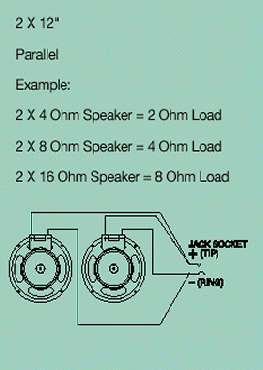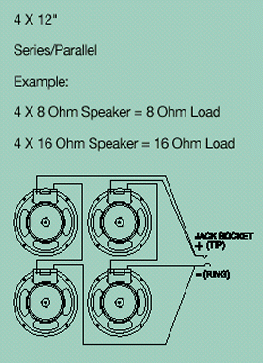|
|
|


If multiples of identical speakers are used in a combo or cabinet,
the overall power rating is calculated by multiplying the
individual speaker rating by the number of speakers in the cab,
e.g.:
4 x 25 watts = 100 watts. However, when speakers are mixed, the
lower rating is used to make the calculation, as both speakers
draw the same power from the amp. For example, in the case of one
60 watt speaker and one 25 watt speaker in the same cab, the
effective power rating is calculated as follows:
1 x 25 watts + 1 x 25 watts = 50 watts total
It is not critical to match the power handling of a speaker system
precisely with the power output of the amplifier but, as a general
rule, the power rating of the speaker(s) should be at least equal
to that of the amplifier.

All guitar speakers have just two
connectors, one marked positive (+) and the other negative (-). If
one speaker is wired the wrong way around in a multiple speaker
configuration, it will not damage the amplifier. However, it will
be ‘pushing’ when the other speakers are ‘pulling’, resulting in
the cancellation of some frequencies in the overall sound. It is
therefore important that the correct wire goes to the correct
terminal.
Replacing the loudspeakers in your cabinet or combo may affect the
manufacturer’s warranty.
 |
|
![]()